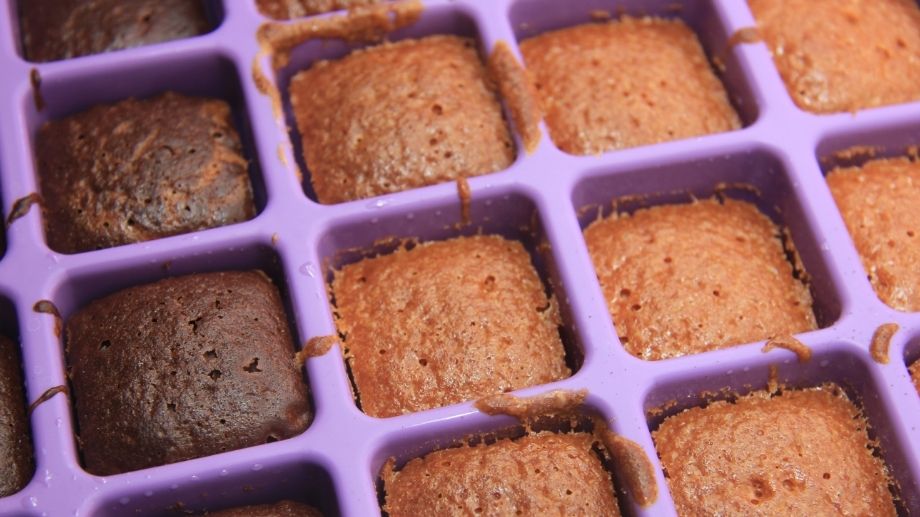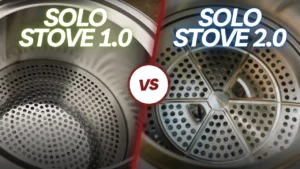The last thing I want to be doing is choosing silicone bakeware as a “safer option” only to have it actually be harmful and leach chemicals into my food like plastic does.
Silicone was deemed safe for consumers by the FDA back in 1979. However, since then, some studies have been done that may suggest that this type of manufactured bakeware is not safe at all.
Let's find out what the truth is.
Some dangers of silicone bakeware include leaching chemicals into your baked goods (especially with high fatty foods) at high temperatures. This occurs at temperatures exceeding 300ºC/572ºF, but some studies have indicated that this can occur at lower temperatures with new bakeware.
I will take you down the rabbit hole in this article. We will try to look at all the facts, studies, and research relating to silicone. Whether it is actually deemed safe, and what cautionary measures you should take if you do intend to keep using these products for baking.
Is Silicone Bakeware Safe To Use? Does It Leach Chemicals?
According to the FDA, silicone does not leach into food or raise health concerns nor release any gas.
Additionally, Health Canada says that silicone cookware has no associated health hazards known to it.
Although it should be noted that a few studies that have taken to testing silicones have found that they can, in fact, release elements and substances at low levels. These studies have focused on by-products of silicone manufacturing such as cVMS (cyclic volatile methyl siloxanes).
These can leach into food from silicone bakeware but only at extremely high temperatures that are above 300 degrees Celcius. These chemicals are easily released into high fatty foods at these high temperatures.
Additionally, this leaching effect was found to be prevalent in new, unwashed molds. This could be a by-product of manufacturing so you should always clean your silicone trays really well before using them.
Is Silicone Bakeware Safer To Use Than Metal?
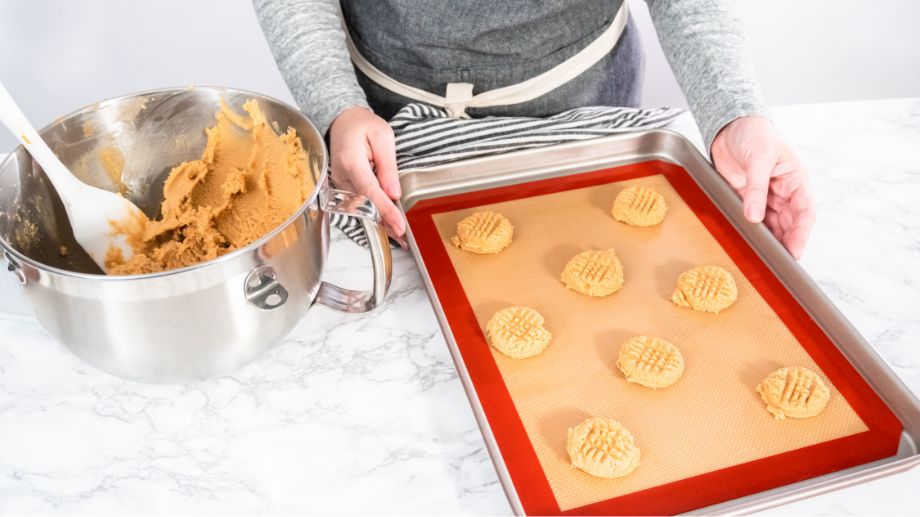
In one regard, silicone bakeware is safer to use than metal due to the fact that it can withstand much higher temperatures than metal (steel or aluminum) without getting damaged.
Moreover, the heat of the silicone is relatively cooler than metals, meaning you are less likely to burn yourself.
Other hazards of metal include Teflon leaching out of the pans and into the food. So in these regards, silicone can be safer.
This makes silicone one of the best and safest materials for ice cube trays, baking trays and food utensils.
Does Silicone Bakeware Leach Chemicals Into Food?
It would help if you considered the studies that took into consideration the leaching of chemicals from silicone into high-fat foods at high temperatures.
1. Silicone Bakeware is Not Heavily Regulated, So May Contain Other Chemicals/Plastics
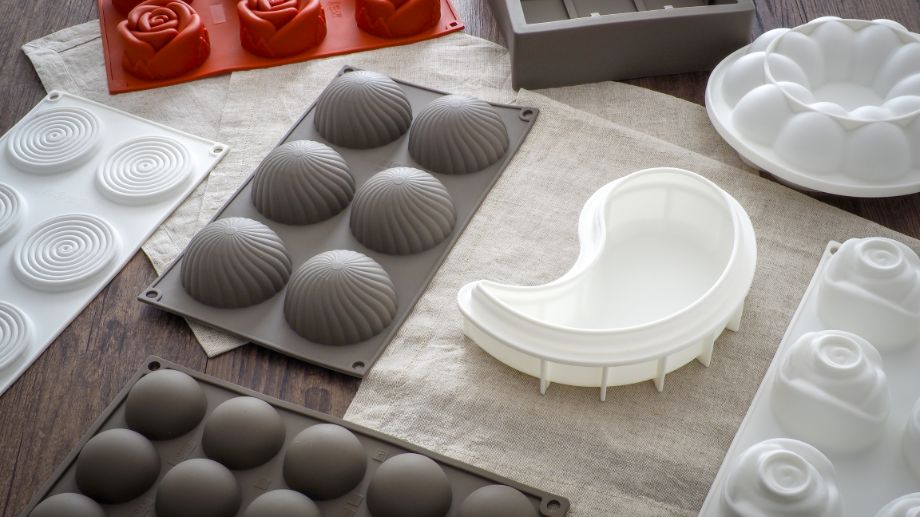
The FDA determined in 1979 that silicone dioxides were safe to be used in food-grade materials. Following that, silicone cookware was introduced in the 1980s, with the first being spatulas.
Since then, the FDA has conducted no further studies. As such, manufacturers have been left with free reign to add additives such as chemicals and plastics to improve the longevity, flexibility, and overall manufacturing of silicone-based cookware and bakeware products.
This is one of the biggest problems with silicone trays and pans. The lack of regulation means it can be difficult to tell exactly what is in your silicone ice cube tray and whether or not it's pure silicone (which is deemed safe) or it has some fillers in it.
Due to these additives (fillers) that manufacturers place in the final cookware or bakeware product, they have been known to let off terrible smells as they start to burn at high temperatures.
In order to avoid these situations, you should always make sure that you have purchased a 100% pure silicone product. There is a way to easily test if your silicone product is 100% pure silicone;
- Twisting the silicone in any which way should not result in it changing color
If the silicone changes color when it is contorted or pinched, then more than likely, a filler has been added to it. Typically, the silicone will change to a pale, whitish color if this is the case.
Also when baking your silicone they should NOT let of a chemical or burning plastic smell. If your trays are doing this then they may contain fillers and should likely be thrown out and replaced by a higher quality product.
2. There Isn't That Much Research On The Safety Of These Products At High Temperatures
Conclusively there has not been a ton of research done on silicone and its effects at high temperatures and if it does, in fact, leach chemicals and what the harmful effects can be.
I discussed one study where they showed this was possible but the research into this field is few and far between. One other major study was conducted all the way back in 2005 by the Swiss Federal Office of Public Health.
This research concluded that the silicone products did leach chemicals at low, moderate, and high temperatures.
However, this process stopped when the products were subjected to this test two or three times, indicating that the products were not cured properly in the manufacturing process.
One of the reasons silicone trays could taste bad or smell bad when first being used is that they need time to remove the by-products of manufacturing that are on the surface of the trays.
This could potentially be removed through washing or perhaps placing the silicone trays in the over empty for 1-2 hours in order to bake away these chemicals.
3. Coatings On Silicone Bakeware May Leach At High Temperatures
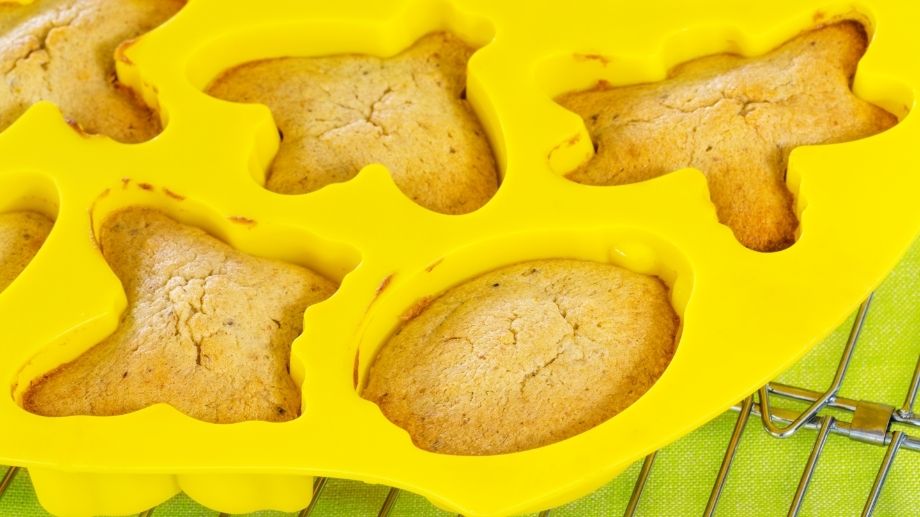
Silicone dioxide is the primary material that has been used to make bakeware since the FDA approved it in 1979, and since then, the debate has been raging on whether it is safe.
You now know that not many papers or research have been done to conclusively determine whether or not silicon releases chemicals into food at high temperatures.
Although, the study I discussed done in 2015 did find that silicone oligomers can be released at high temperatures, namely 300 degrees Celcius. However, the qualitative tool used in the study to identify the silicone rubbers had errors introduced by the calibration of the method employed.
Thus silicone may leach at high temperatures, so you should always opt to use 100% silicone products and keep the temperature as low as possible when baking.
4. Silicone May Smell Terrible During Baking
Suppose your silicone bakeware product starts to smell when you are using it for baking. In that case, chances are that the manufacturer has added a filler to the product in the manufacturing process.
This is a relatively clear sign that some form of leaching of the silicone into your food will be occurring, and if such a situation occurs, you are better off throwing out that bakeware.
Here I am talking about the tray itself causing the smell, usually when first used. Because silicone is porous when you use grease on your silicone baking pans the grease can get stuck to the silicone and burn in future uses. So it's important to determine whether or not it's the tray itself causing the smell or grease stuck on the tray.
It would help if you always purchase bakeware that is 100% silicone and that you utilize the tip I suggested to test whether or not any filler (additives) have been used in conjunction to make the product.
5. Silicone Bakeware Tends To Absorb Smells and Flavors
Not regarding the leaching of chemicals, another aspect to consider is that silicone can, in fact, absorb the smells and flavors of your baked goods. This means that they won't taste as delectable as you would have hoped.
Additionally, the silicone can retain those odors and flavors, passing them on to your next baked good. Silicone can even begin to form a white residue from the dissolved salts in hard water and this can be notoriously difficult to clean away.
As such, you should always opt to clean your silicone bakeware thoroughly before using it with cleaning products that are mild and safe for consumption.
Conclusion
Whether or not you decide to use silicone bakeware products is up to you. I discussed some of the dangers that have been associated with these products. However, studies and tests have not been conclusive, and the FDA along with other health organizations, have deemed it safe.
Whatever you think, you should always opt to use 100% pure silicone products and use them at the recommended temperatures if you intend to use them for baking.

